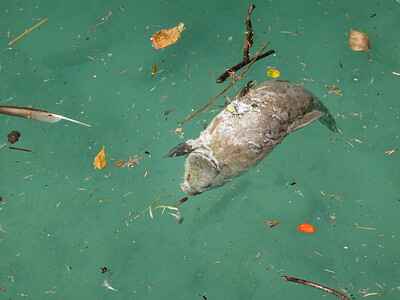5 Uses of Tidal Energy Explained
Uses of tidal energy are; electricity generation, grain milling, sustainable agriculture, desalination, and flood control.
This article discusses the uses of tidal energy, as follows;
1). Electricity Generation (as one of the Uses of Tidal Energy)
Electricity generation is arguably the most prominent and common use of tidal energy.
Tidal energy is used for electricity generation by capturing kinetic energy from tidal flooding and ebbing cycles, and converting this energy to mechanical energy which rotates a tidal turbine that is in turn used to activate a generator [5].
Power that has been generated from tidal energy can be transmitted using cables which are mostly installed underwater. Such cables link the tidal power plant from its offshore location to the point(s) onshore where electricity is needed.
The power can also be stored for later use with energy storage systems like batteries. This is a recommendable move, due to the intermittent nature of wave energy supply.
2). Grain Milling
The use of tidal energy for milling represents one of the earliest applications of this type of renewable energy, and dates back as far as the Ancient Roman Empire [1].
Milling itself refers to the act and process of crushing grains or other materials to produce small particles.
Tidal energy utilization for million operations is made possible by tide mills, which are an antiquated device that uses the simple kinetic-to-mechanical principle of turbines to produce mechanical energy that rotates a turbine and helps crush the substrate.
As already hinted, the direct use of tidal energy for milling is an outdated practice. The modern alternative of this is the use of tidal energy to generate electricity, which is in turn used to power an electric mill.

3). Sustainable Agriculture (as one of the Uses of Tidal Energy)
Tidal energy can be used to support the practice of sustainable agriculture in coastal areas.
There are two main areas where tidal energy is applied in agriculture. These are irrigation and aquaculture.
The use of tidal energy for irrigation is an indirect process, that commences with desalination of sea water using tidal energy. The desalinated (fresh) water resulting from such process can then be used to water coastal farm lands.
Components of tidal energy systems like barrages can also help protect agricultural lands from excessive soil salinization, which can occur as a result of unregulated saltwater intrusion. These barrages and dams can mitigate saltwater intrusion by restricting the flow of seawater into adjacent land areas.
Tidal energy is also applicable in aquaculture, to support the raising of aquatic species like fish and shrimps. This is because tidal systems can regulate water flow in a manner that enables aquatic farmers to effectively divert water resources to their farms.
Tidal energy can be used to generate electricity which is in turn applicable for heat and light production, both of which are needed in aquaculture.
4). Desalination
Desalination of water is an important practice, especially in many coastal areas where tidal energy can be harnessed.
The desalination of seawater usually occurs by reverse osmosis; a process that uses pressure to drive the water through a semi-permeable membrane that helps remove its impurities.
Tidal energy can be used in water desalination, to supply the required pressure for the osmotic purification process [3].
The use of tidal energy for desalination purpose is beneficial for some reasons, which include the fact that tidal energy is emission-free, and often available in the same locations where desalination is being carried out.
In cases where tidal energy alone is not sufficient to power the process, it can be augmented using some other type of renewable energy, like solar.
The result in such cases would be a hybrid system that combines solar PV panels and tidal energy components [2].
5). Flood Control (as one of the Uses of Tidal Energy)
Hydrological hazards like flooding can be mitigated using tidal energy system components like barrages [4].
This is because tidal energy systems are used to control water flow in order to capture energy effectively. The same functionality can be exploited for hazard control in the case of flooding.
The principle behind using tidal barrages to control flooding is the same as that which governs the use of conventional water dams for the same purpose. It entails storing excess water during high tide and releasing it during low tide.
This approach not only protects the ecosystem, but also ensures that water is available for power generation under all tidal conditions.
Conclusion
Uses of tidal energy are;
1. Electricity Generation
2. Grain Milling
3. Sustainable Agriculture
4. Desalination
5. Flood Control
References
1). Boretti, A. (2020). "Trends in tidal power development." E3S Web of Conferences 173:01003. Available at: https://doi.org/0.1051/e3sconf/202017301003. (Accessed 12 February 2023).
2). Delgado-Torres, A. M.; Garcia-Rodríguez, L. (2022). "Off-grid SeaWater Reverse Osmosis (SWRO) desalination driven by hybrid tidal range/solar PV systems: Sensitivity analysis and criteria for preliminary design." Sustainable Energy Technologies and Assessments 53(1–3):102425. Available at: https://doi.org/10.1016/j.seta.2022.102425. (Accessed 12 February 2023).
3). Laguna, A. J.; Ordonez, S. (2021). "Utilising tidal stream energy to drive seawater reverse osmosis desalination processes." 11th European Wave and Tidal Energy Conference (EWTEC). Available at: https://research.tudelft.nl/en/publications/utilising-tidal-stream-energy-to-drive-seawater-reverse-osmosis-d. (Accessed 12 February 2023).
4). Ma, Q.; Moreira, T. M.; Adcock, T. A. A. (2019). "The impact of a tidal barrage on coastal flooding due to storm surge in the Severn Estuary." Journal of Ocean Engineering and Marine Energy 5(3). Available at: https://doi.org/10.1007/s40722-019-00143-w. (Accessed 12 February 2023).
5). Nicholls-Lee, R. F.; Turnock, S. R. (2008). "Tidal energy extraction: renewable, sustainable and predictable." Sci Prog. 2008;91(Pt 1):81-111. Available at: https://doi.org/10.3184/003685008X285582. (Accessed 12 February 2023).








